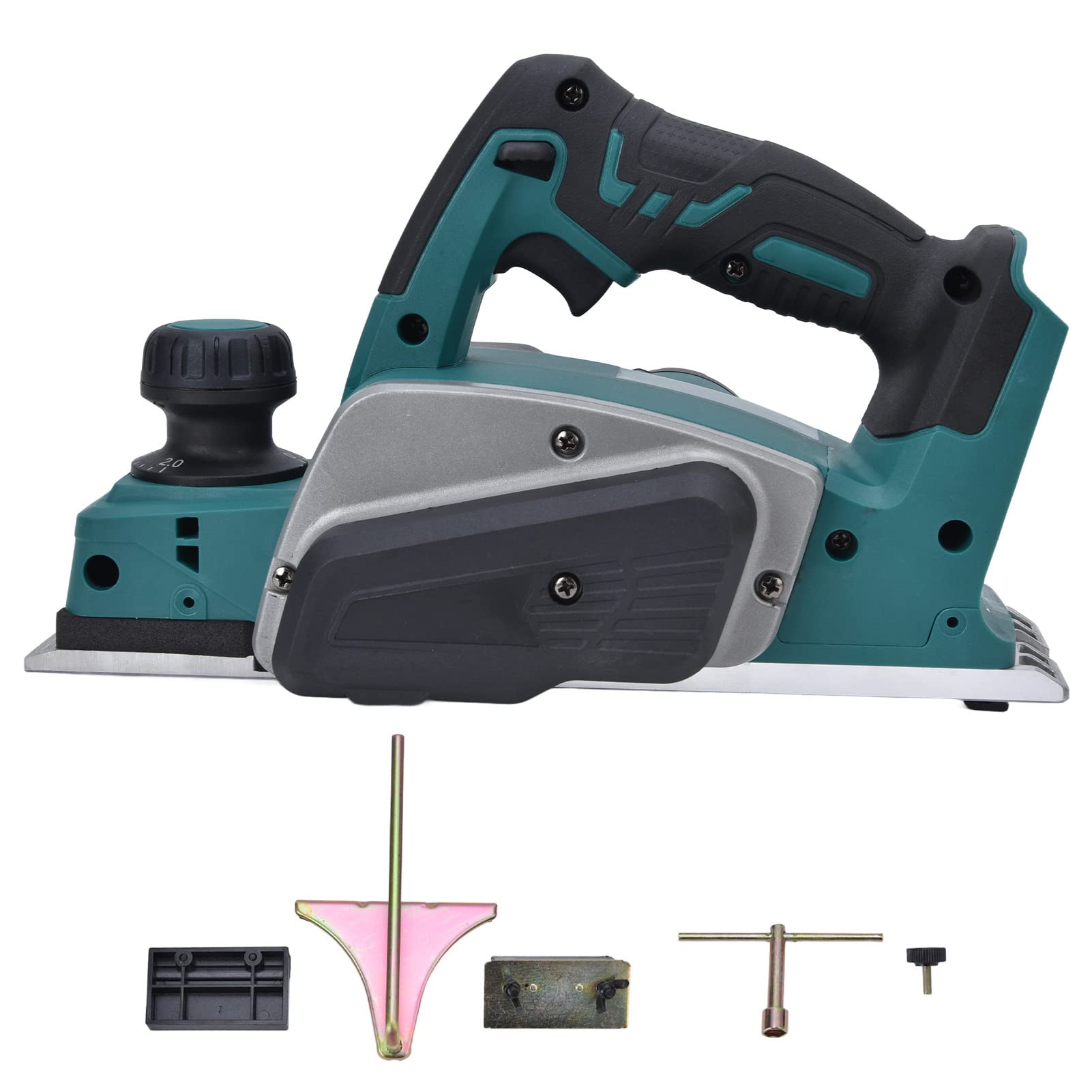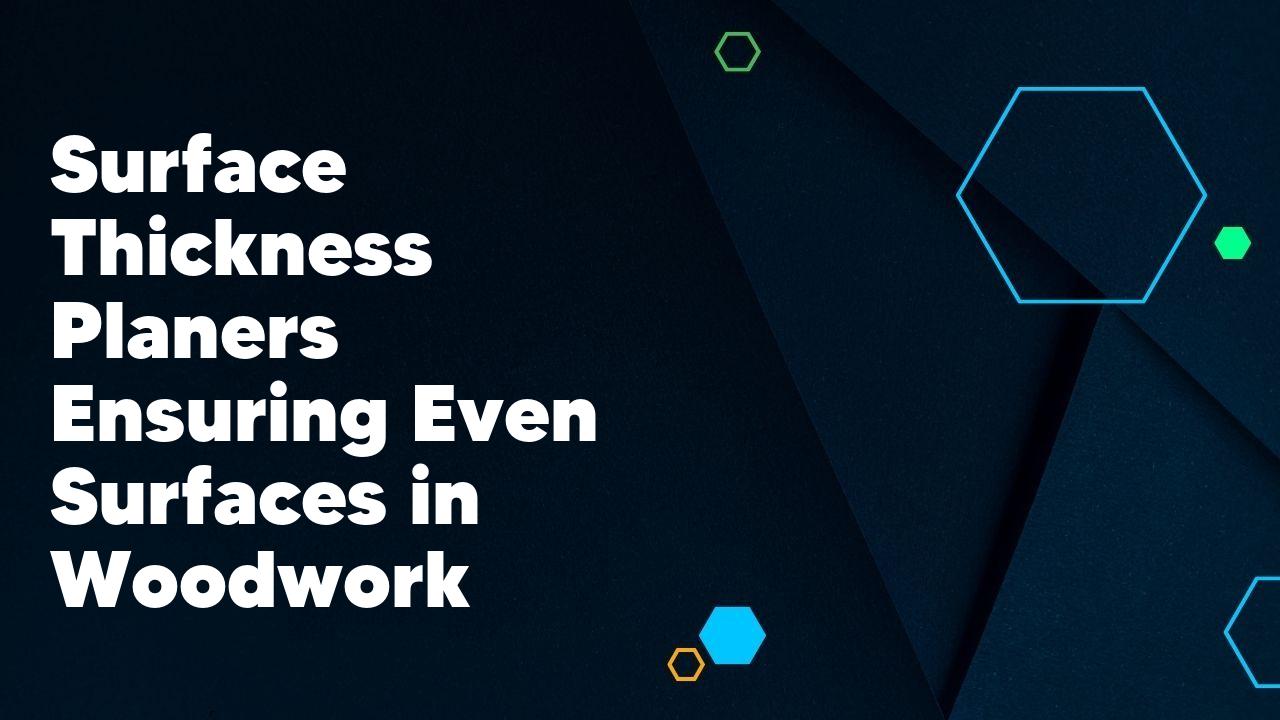Surface thickness planers are essential tools in the field of woodworking, as they play a crucial role in ensuring even surfaces on wooden materials. These machines are designed to remove excess material from the surface of the wood, resulting in a smooth and uniform finish. In this article, we will explore the importance of surface thickness planers and how they contribute to the overall quality of woodworking projects.
The Importance of Surface Thickness Planers in Woodworking
Surface thickness planers are an essential tool in woodworking that play a crucial role in achieving smooth and even surfaces on wooden boards. These machines are designed to remove excess material from the surface of the wood, resulting in a consistent thickness throughout the entire piece. This is particularly important when working with rough or uneven boards, as it ensures that the final product is of high quality and free from imperfections. Surface thickness planers also save time and effort by quickly and efficiently removing material, allowing woodworkers to focus on other aspects of their projects. Overall, these machines are indispensable in the woodworking industry for achieving professional and precise results.
How Surface Thickness Planers Work to Create Even Surfaces

Surface thickness planers are powerful tools used in woodworking to create even surfaces on rough lumber. These machines consist of a flat table and a rotating cutter head with multiple blades. The rough lumber is fed into the planer, and as it passes through, the rotating blades shave off the high spots, resulting in a smooth and even surface. The thickness of the wood can be adjusted using a depth gauge, allowing for precise control over the final thickness. Surface thickness planers are essential for achieving a professional finish on woodworking projects, ensuring that all surfaces are level and smooth.
Choosing the Right Surface Thickness Planer for Your Woodworking Projects
When it comes to woodworking projects, having the right tools is essential. One tool that is often overlooked but can make a big difference is a surface thickness planer. This tool is used to smooth and level the surface of wood, making it perfect for projects like furniture making or cabinetry. However, with so many options available, it can be overwhelming to choose the right one. The first thing to consider is the thickness capacity of the planer. Depending on the size of your projects, you may need a planer with a larger capacity. Additionally, it’s important to consider the power and durability of the planer, as well as any additional features that may be beneficial for your specific needs. By taking the time to research and choose the right surface thickness planer, you can ensure that your woodworking projects turn out beautifully.
Tips and Techniques for Using Surface Thickness Planers Effectively
Surface thickness planers are powerful tools that can help you achieve smooth and even surfaces on your woodworking projects. To use them effectively, there are a few tips and techniques to keep in mind. First, always make sure to properly set up the planer before use, including adjusting the infeed and outfeed tables and ensuring the blades are sharp and properly aligned. Additionally, it’s important to feed the wood through the planer at a consistent speed and to take light passes to avoid tear-out. Finally, be sure to wear appropriate safety gear, such as goggles and ear protection, when operating the planer.
Common Issues and Troubleshooting with Surface Thickness Planers
Surface thickness planers are a valuable tool for woodworkers, but they can sometimes encounter common issues that require troubleshooting. One common issue is uneven thickness across the board. This can be caused by a dull or improperly set blade, or by feeding the board too quickly. To fix this issue, the blade should be sharpened or replaced, and the feed rate should be adjusted to a slower speed. Another common issue is snipe, which is when the planer cuts deeper at the beginning or end of the board. This can be caused by an improperly adjusted infeed or outfeed table. Adjusting these tables to be level with the planer bed can help eliminate snipe.
Enhancing the Quality of Your Woodwork with Surface Thickness Planers
Surface thickness planers are essential tools for woodworkers looking to enhance the quality of their projects. These machines are designed to precisely and uniformly plane the surface of wood, resulting in a smooth and even finish. By removing imperfections such as rough spots, knots, and unevenness, surface thickness planers can greatly improve the overall appearance and functionality of woodwork. Additionally, these planers allow for precise thickness control, ensuring that each piece of wood is consistent in size and thickness. This is particularly important for projects that require multiple pieces of wood to fit together seamlessly. With the use of surface thickness planers, woodworkers can achieve professional-level results and create high-quality woodwork that is both visually appealing and structurally sound.
Conclusion
In conclusion, surface thickness planers are essential tools for achieving even surfaces in woodwork. They provide a convenient and efficient way to remove excess material and create smooth and level surfaces. Whether for professional woodworkers or DIY enthusiasts, investing in a surface thickness planer can greatly enhance the quality and precision of woodworking projects.
What is a surface thickness planer?
A surface thickness planer is a woodworking tool used to create even surfaces on pieces of wood. It is commonly used to remove imperfections, such as roughness or unevenness, from the surface of the wood.
How does a surface thickness planer work?
A surface thickness planer works by feeding a piece of wood through a set of rotating blades. These blades shave off a thin layer of wood from the surface, resulting in a smoother and more even finish.
What are the benefits of using a surface thickness planer?
Using a surface thickness planer can help ensure that your woodwork projects have even surfaces. This is important for achieving a professional and polished look. It can also make it easier to join pieces of wood together, as the surfaces will be flush and level.
Can a surface thickness planer be used on all types of wood?
A surface thickness planer can be used on most types of wood, including hardwoods and softwoods. However, it is important to note that certain types of wood, such as highly figured or highly resinous woods, may require special considerations or techniques when using a planer.
Are there any safety precautions to take when using a surface thickness planer?
Yes, there are several safety precautions to take when using a surface thickness planer. These include wearing safety goggles to protect your eyes from flying wood chips, using push blocks or push sticks to feed the wood through the planer, and ensuring that the planer is properly secured to a stable surface.
Can a surface thickness planer be used for other woodworking tasks?
While a surface thickness planer is primarily used for creating even surfaces on pieces of wood, it can also be used for other woodworking tasks. For example, it can be used to dimension lumber or to create custom thicknesses for specific projects.

